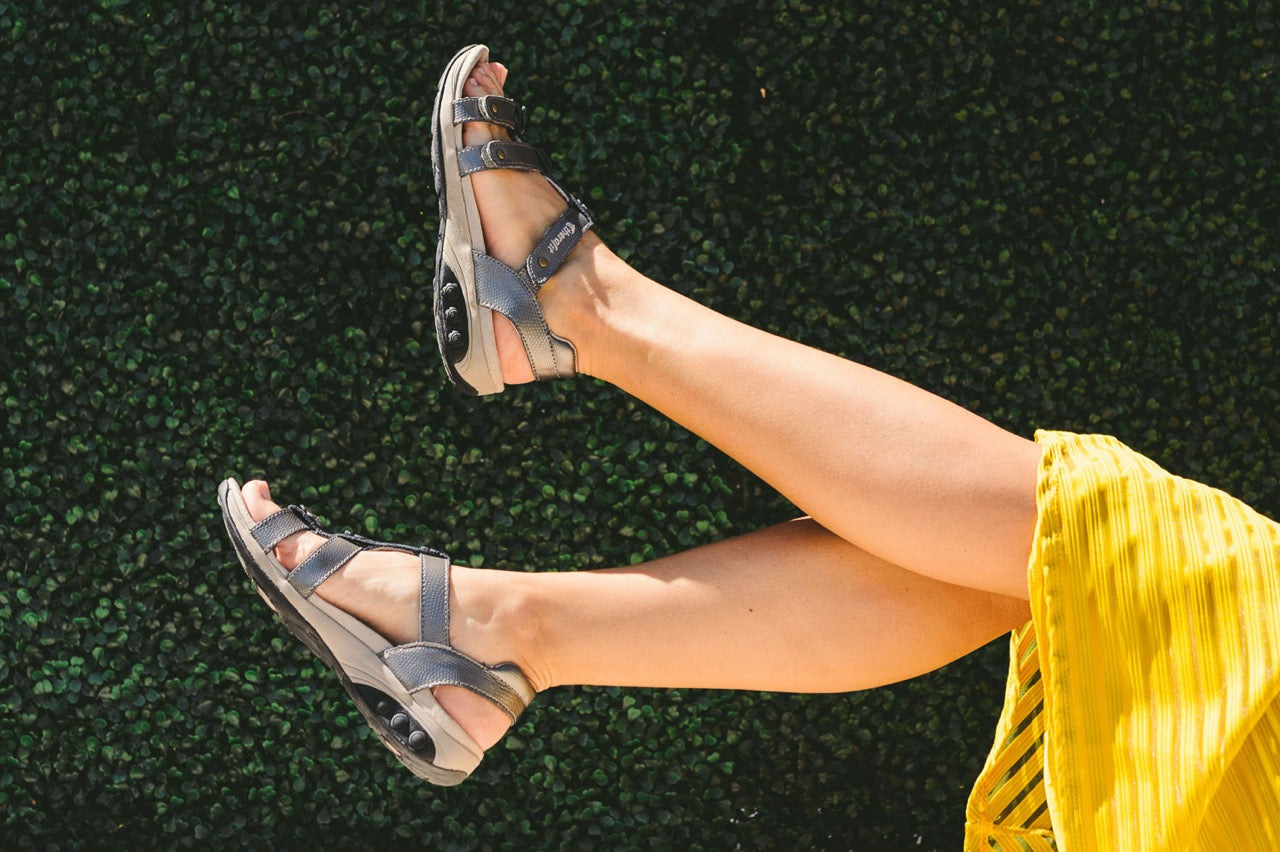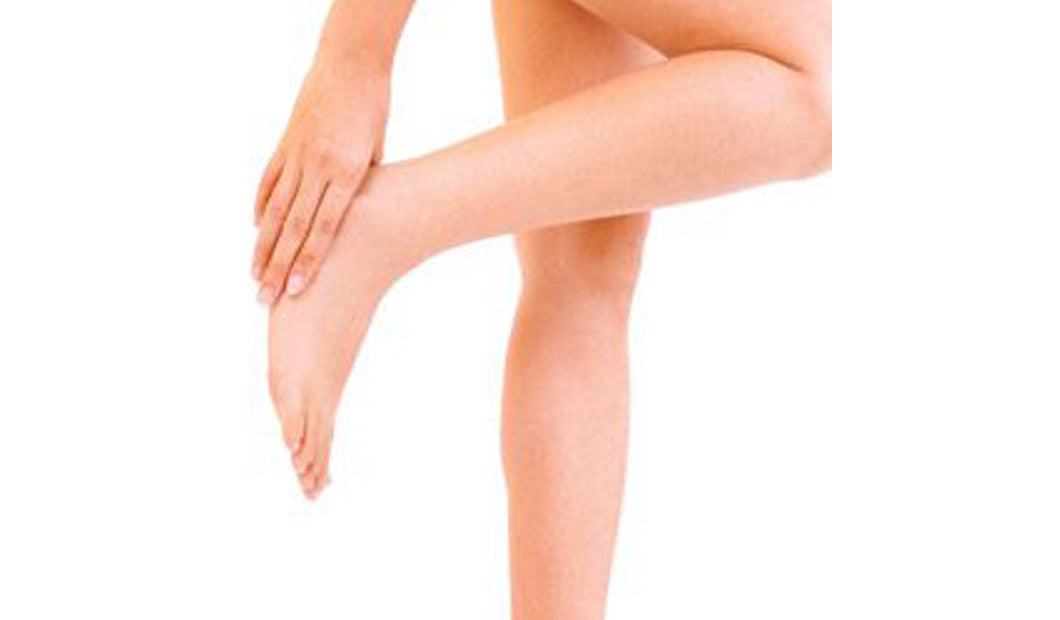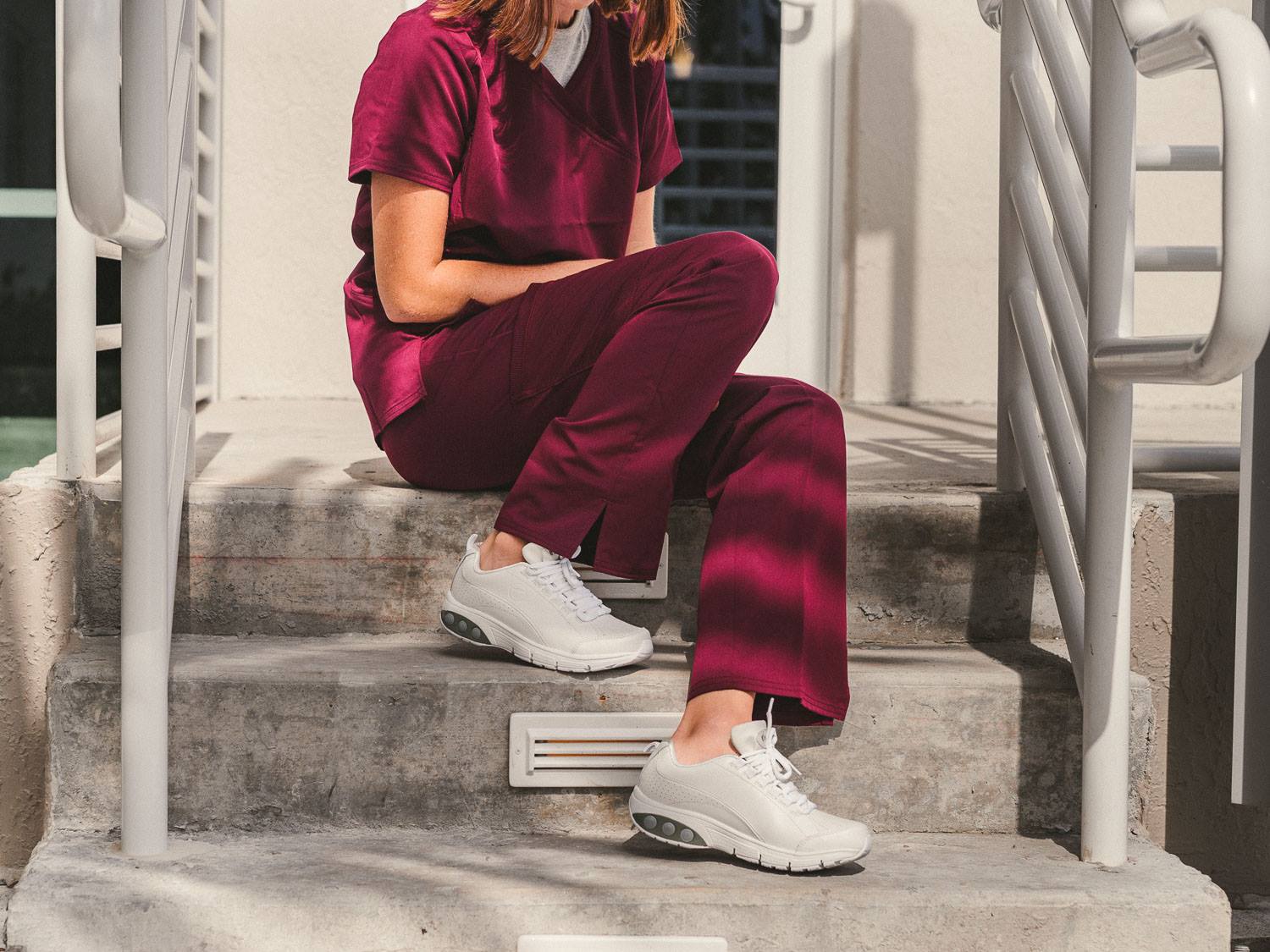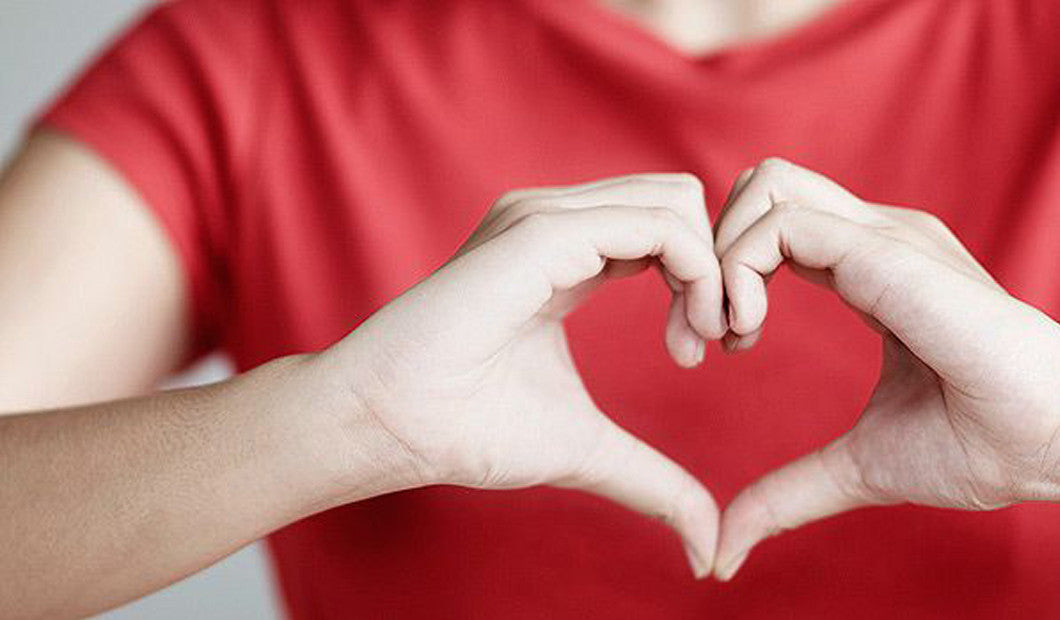Achy Legs? Throw out those flip-flops, high-heels, and flats

Legs achy? Do they feel like giant marble-stone pillars attached to your hips? Tired, aching legs can be the result of standing on your feet for long periods of time, and while rest and periodic sitting can (certainly) help alleviate the problem, wearing footwear that does not have stability or sufficient cushioning or arch support will absolutely aggravate the issue.
Flat feet and other structural problems make some people more susceptible to leg pain than others, and proper footwear is the best way to compensate.
The shoes we women wear can make us feel slim, sexy, stylish – yet they often leave us wincing in pain too. We run our errands in flip-flops and walk to work in heels , and Prevention Magazine, a leading publisher of health, fitness, and whole body issues, wanted to find out just how much stress this was causing to our bodies. They decided to study three 40-something year old women to a high-tech motion analysis laboratory to test out various types of shoes as compared to a solid, supportive, running sneaker. As you can imagine, they all seriously paled in comparison.

“Summer time and the livin’s easy”, but what you’re putting your feet though in flip-flops is not. Your toes are constantly gripping and bunched up to keep the shoes from falling off, making it impossible for your arch to flex normally, which in turn compromises the way your forefoot pushes off when you step forward. What happens? We compensate with our hips – forcing our knees and hips to absorb the impact and not allowing our butt and the backs of our legs to fully engage, thus weakening them over time.
To help your toes recover from the stress of being clenched, Prevention suggests stretching the muscles along the top of the foot. Stand with your feet hip-width apart, then place one foot behind you, turning the tops of your toes to the floor. Try to keep both knees straight, stand tall, and don't let your ankle roll out to the side as you stretch. Start by holding the stretch for a few seconds on each side (your foot might cramp initially because it's not used to stretching this way), and work up to 60 seconds on each side.
Thankfully Therafit came along and designed a sandal just for you flip-flop lovers. With the same patented technology as our athletic line, these flip flops not only offer you the optimum amount of support (that you can customize), but the foot bed is encrusted with 86 acupressure points to stimulate the various regions of your foot. Your feet can happily enjoy the breeze with these sandals and still feel your body incredibly supported.
Let’s raise the bar a little higher (literally) and check out the effect of high-heeled shoes. We know they make our bums perky and highlights our calf muscles, but is it worth the lasting damage to our bodies? A 2011 Danish study found that walking in heels can increase the risk of osteoarthritis six times!
So how exactly is lookin’ hot in stilettos affecting us? Because your feet are tipped forward when you wear heels, you quads are forced to overcompensate, making them tight and prone to injury. You’re also walking with your knees slightly bent, putting a whopping 200% more stress on your kneecaps, wearing away the cartilage and increasing your risk of arthritis. The added height of heels puts excessive strain on the shin muscles, leading the way to possible shin splints. Heels also put your calf muscles in a shortened position, and overtime this can become permanent. Beware my lovies – you could have 13% shorter calf muscles than non-heel wearers!
How to help? Stretch out those calves, but also massage your shins by applying long, vertical finger strokes down the front of your lower leg, then focus on kneading the muscles horizontally.
If you can’t nix the heels altogether, embrace the commuter shoe! Throw on a pair of Therafits to get you where you need to be – once your comfy at your desk or at the restaurant table, you can switch to those skyscraping shoes. Remember your feet swell throughout the day, so be sure your shoes are roomy enough to carry you through the hours. Research shoes that a 2-inch heel creates an impact force 4% greater than flats, while 3-inch heels boost stress by 33%!

And lastly – what about flats? They sound like the much better alternative to heels when you’ve got to look sharp, but in fact a basic ballet flat can be just as problematic. Most flats lack any kind of internal support, and without it, the ligaments and tendons that run along the bottom of your foot can overstretch and the arch can collapse (which can then lead to plantar’s fasciitis). Conversely, if you have high arches, because most flats don’t have much interior cushioning, the lack of padding can trigger pain in the heel or ball of your foot when walking.
To wear shoes with no built-in support, give your feet a little workout to strengthen the tiny foot muscles that support your arches, like toe lifts! Raise your big toe without moving the rest. Also walking across uneven surfaces barefoot will help stimulate various nerves in your feet that don’t usually get activated.
Make Your Whole Body Happy and take care of your feet first! We designed our shoes to give you the best foundation so that your body can function, feel, and perform at its optimal level. Therafit Shoes are made to take the shock of each step and distribute it outwards and dowanrds, with incredible arch support, and removable Personal Comfort Adapters in the heel to customize the impact resistance of each step you take.
Learn how Therafit Shoes can help ease that back, knee, leg, and foot pain.



